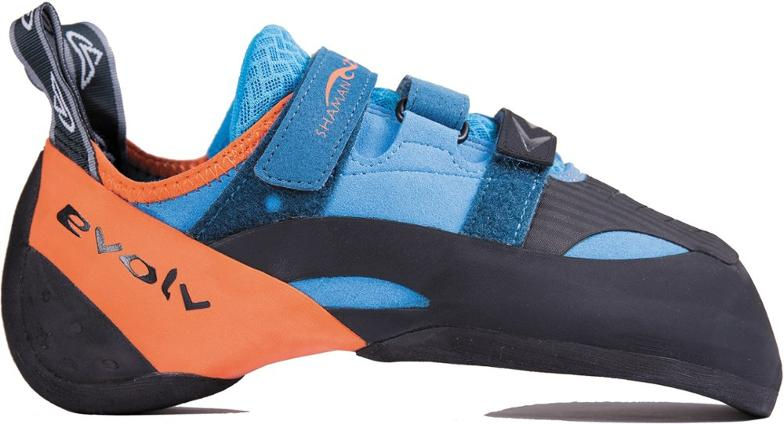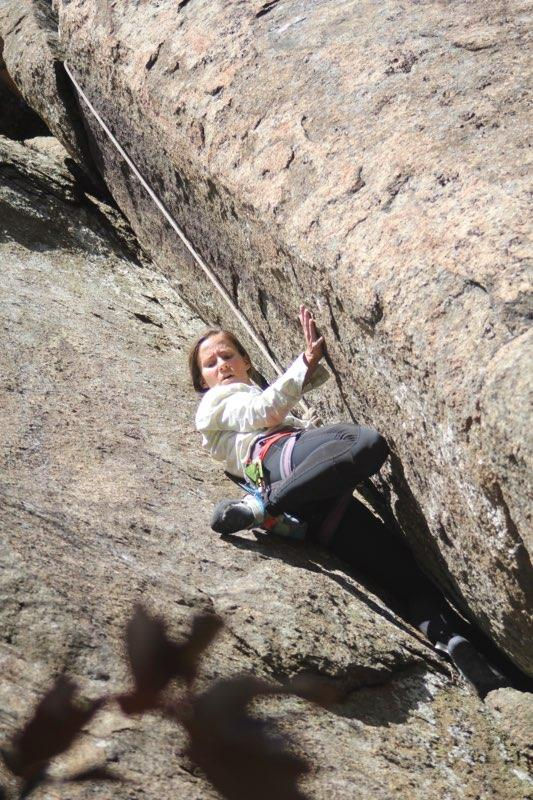OMG Shoes!
- Logan Thaler

- Oct 28, 2019
- 3 min read
An intensive breakdown of the best climbing shoes
As promised last week, I wanted to help you guys pick the best shoe for your style of climbing. All shoes are not made equally! My dad always joked me for picking out cleats when I played soccer. He'd always say how the shoe doesn't matter, they all do the same thing. However climbing shoes are not! You're shoes are graded on a scale of aggression. They are either neutral, moderate or aggressive. Stay tuned to learn more.
I think the most important thing to put into consideration is the type of rock walls you plan to face. Our shoes are designed specifically for each type of wall, and having the wrong shoe, can make your foot holds super weak.
The first wall I want us to take a look at is a slab wall. Slab walls are usually rock faces at are angled at less than 90 degrees. The rock usually tends not to be very porous but instead superflat. There aren't many pockets to stick toes into, therefore it requires the climber to tend to keep their weight pressed onto their feet. Also known as smearing. I face a lot of my slab routes on limestone in the Blue Ridge. Granite usually tends to be in slabs.

Next the wall becomes more aggressive. They are simply called vertical walls. They are exactly what they say, a wall that is 90 degrees. Climbers will usually include walls that are a bit under 90 degrees since they take much of the similar techniques. Vertical walls can be both very porous, and very slabby. Take this into consideration when choosing shoes. Sometimes if you are facing walls with more slabs and cracks your shoe will much more different than facing a porous or chonky wall. This requires much more precise footwork and technique to keep your weight over your feet, and to avoid pumping out your arms.

Finally, the most aggressive rock wall is an overhanging wall. Also known as exposed rock, or a roof. Overhanging walls require a lot of heel hooks, and toe jams. Also since you are climbing upside down. When you go to engage a foot hold you press your ankle down and under the hold. This helps the climber climb horizontally.


They tend to fit more like your everyday shoe. They are really flat and are made for lasting comfort. A neutral shoe is a great shoe for beginner climbers. Climbing shoes tend to not be very comfortable, and a neutral shoe is great way to start shaping your feet into a shoe without having the shoe bend your toes down. They are also really great shoes for slab routes. They are very flat so they have a lot of friction on smears, also they are able to slide into cracks easier to set toe jams.
Pros:
Very Comfortable
Flat and great for smearing
Stiffer soles for more support (Great for beginners)
Low profile make it easy to slip into cracks
Cons:
Thicker soles, mean they are less responsive
Relaxed fit not designed for aggressive overhangs

Easily identified by their slightly downward shape. This is also known as the camber. The moderate shoe is right in the middle of a flat neutral shoe and a very cambered aggressive shoe. Moderate shoes are great for an intermediate climber facing multi pitch walls with more aggressive climbing. The shoe is cambered enough to give you your added support, but relaxed enough your foot won't break off with your shoes on all day. Moderate shoes are an all around shoe, great for climbing slabs, cracks, and moderately overhung walls.
Pros:
Downturned shape allows you to climb harder routes.
Stickier rubber, and thinner soles make them more responsive.
More comfortable than an aggressive shoe.
Cons:
Not as performance oriented as a aggressive shoe.
Downturned toes make them less comfortable than the neutral shoes.
Thinner and stickier soles means they break down more quickly

These shoes have a much more downturned toe. The extra camber and heel tensions forces the toes and feet to become stiffer and stronger and allows the climber to tip toe around on smaller holds. Aggressive shoes tend to have an asymmetrical shape. Forcing the weight over the big toe. Allowing the shoe to be able to feel around tinny edges. Because of the downturned toes, and snugger fit, aggressive shoes are climbed usually on single pitch routes.
Pros:
Performance oriented allows the climber to face more overhanging routes.
Stickier rubber and thinner soles
Cons:
Not made for comfort
Downturn toes don't fit into cracks, and forces the toes away from smears
Thanks for checking in! Tune in next week as we discuss some very crucial and easy techniques anyone can learn! Also don't forget to follow us on Twitter, and to check us out on Facebook!



Comments